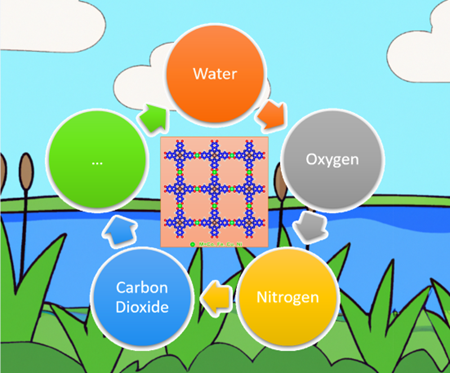 PDF(6226 KB)
PDF(6226 KB)


Conductive Phthalocyanine-Based Metal-Organic Frameworks for Efficient Electrocatalysis
Shun Lu, Yuan Liu, Hong Liu
Prog Chem ›› 2024, Vol. 36 ›› Issue (3) : 285-296.
 PDF(6226 KB)
PDF(6226 KB)
 PDF(6226 KB)
PDF(6226 KB)
Conductive Phthalocyanine-Based Metal-Organic Frameworks for Efficient Electrocatalysis
The development of innovative catalysts for various electrochemical scenarios is crucial in satisfying the growing demands for sustainable energy and environmental conservation. Conductive metal-organic frameworks (c-MOFs) based on phthalocyanine complexes known as phthalocyanine-based c-MOFs, have shown promising potential in electrochemical energy conversion and environmental research. These c-MOFs represent a new category of layer-stacked porous MOFs with in-plane extended π-conjugation structure, which can enhance electrocatalytic activity by facilitating the mass diffusion of reactants and electron/charge transfer. The exceptional promising for a variety electrocatalytic reactions, such as water, oxygen, CO2, and nitrogen conversion. In this work, we focus primarily on phthalocyanine-based c-MOFs rather than other types of c-MOFs, providing a comprehensive overview of their conductive mechanisms and main electrocatalytic reactions. We also cover recent progress in the utilization of phthalocyanine-based c-MOFs as heterogeneous catalysts in electrocatalysis. Furthermore, we explore the challenges related to the utilization of phthalocyanine-based c-MOFs in electrocatalysis. The state-of-the-art research and insights into the future perspectives of phthalocyanine-based c-MOFs as electrocatalysts are also presented and discussed. This work aim to guide the development of phthalocyanine-based c-MOF electrocatalysts with enhanced activity.
1 Introduction
2 Conductive mechanisms
3 Electrocatalysis
3.1 Water electrolysis
3.2 Oxygen reduction reaction
3.3 Carbon dioxide reduction reaction
3.4 Nitrogen reduction reaction
4 Challenges and outlook
4.1 Catalytic activity
4.2 Conductivity
4.3 Selectivity
4.4 Stability
4.5 Other possible reactions
5 Summary

conductive metal-organic frameworks / phthalocyanine-based MOFs / conjugated structure / electrocatalysis
| [1] |
|
| [2] |
|
| [3] |
|
| [4] |
|
| [5] |
|
| [6] |
|
| [7] |
(楚弘宇, 王天予, 王崇臣. 化学进展, 2022, 34(12): 2700.)
|
| [8] |
(严壮, 刘雅玲, 唐智勇. 化学进展, 2021, 33(1): 25.)
|
| [9] |
|
| [10] |
|
| [11] |
(闫保有, 李旭飞, 黄维秋, 王鑫雅, 张镇, 朱兵. 化学进展, 2022, 34 (11): 2417.
|
| [12] |
|
| [13] |
|
| [14] |
|
| [15] |
|
| [16] |
|
| [17] |
|
| [18] |
|
| [19] |
|
| [20] |
|
| [21] |
|
| [22] |
|
| [23] |
|
| [24] |
|
| [25] |
|
| [26] |
(杨孟蕊, 谢雨欣, 朱敦如. 化学进展, 2023, 35(5): 683.).
|
| [27] |
|
| [28] |
|
| [29] |
|
| [30] |
|
| [31] |
|
| [32] |
|
| [33] |
|
| [34] |
|
| [35] |
|
| [36] |
(朱月香, 赵伟悦, 李朝忠, 廖世军. 化学进展, 2022, 34(6): 1337.)
|
| [37] |
|
| [38] |
|
| [39] |
|
| [40] |
(李佳烨, 张鹏, 潘原. 化学进展, 2023, 35(4): 643.).
|
| [41] |
|
| [42] |
|
| [43] |
|
| [44] |
|
| [45] |
|
| [46] |
|
| [47] |
|
| [48] |
|
/
| 〈 |
|
〉 |